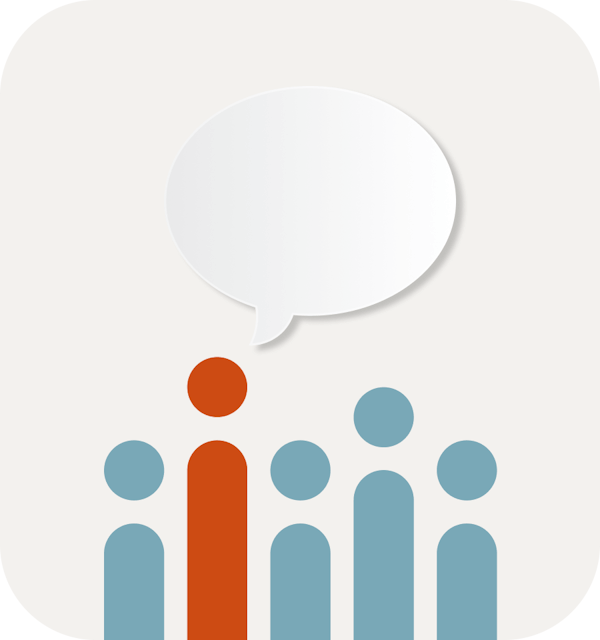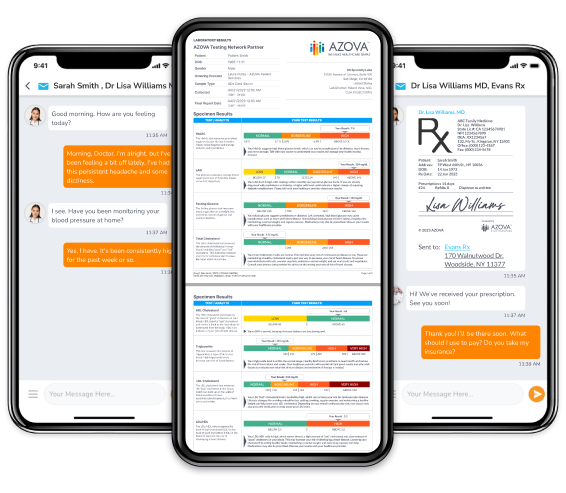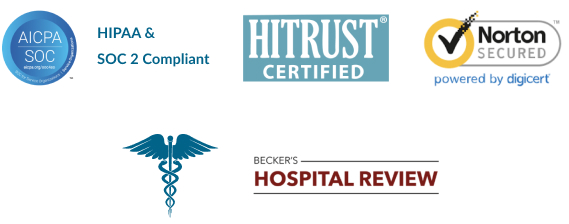Reliable earache treatment, just a click away.
Connect with a board-certified healthcare provider for earache relief via a quick, secured video visit or messaging. Receive a diagnosis and treatment plan, all without leaving home.
Available in all 50 states.

Understanding earaches
Earaches, also known as otalgia, are a common complaint, especially in children. They can be a sharp, dull, or burning sensation that may last for a short time or be ongoing.
While earaches often indicate an ear infection or other underlying health issue, in rare cases, they might signal a more serious condition. The treatment for an earache depends on its underlying cause.
- Earache symptoms in adults
- Earache symptoms in children
- Earache causes in adults
- Earache causes in children
- Earache treatments for adults
- Earache treatments for children
Earache symptoms in adults1
Earaches can develop from infections or injuries, leading to a range of symptoms. Common signs in adults include:
- Ear pain
- Impaired hearing
- Fluid drainage from the ear
Earache symptoms in children1
In children, earaches may come with additional symptoms, making it easier to spot an issue. Along with ear pain, they may experience:
- Muffled hearing or difficulty responding to sounds
- Fever
- A sense of fullness in the ear
- Trouble sleeping
- Tugging or pulling at the ear
- Increased irritability or crying
- Headache
- Loss of appetite
- Loss of balance
Earache causes in adults2
Ear pain in adults often isn’t caused directly by ear infections. Instead, the pain can be referred from other areas like the teeth, jaw, or throat. This is known as referred pain.
Common causes of ear pain include:
- Eustachian tube dysfunction: Blockages or problems with this tube can cause fluid buildup and pressure.
- Ear infections: Both acute (short-term) and chronic infections can lead to ear pain.
- Ear injuries: Pressure changes, such as from flying or diving, can damage the ear and cause pain.
- Foreign objects or earwax: Buildup of these can irritate the ear canal and cause pain.
- Dental issues: Tooth infections or problems with the jaw joint (TMJ) can lead to earaches.
- Sinus infections: Inflammation of the sinuses can also cause ear pain.
- Sore throats: Sore throats can sometimes cause pain in the air.
Adults with certain underlying health conditions or who’ve undergone specific treatments may be at a higher risk of developing a serious fever. If such is your case, it’s important to inform your doctor about any fever symptoms you experience.
Earache causes in children3
Earaches are common in children and can have various causes. Here’s what might be behind your child’s ear pain and how to address it:
- Middle ear infection: Often the result of a cold or upper respiratory infection.
- Fluid in the ear: Sometimes leftover after an ear infection or due to allergies.
- Swimmer’s ear: A painful condition caused by water trapped in the outer ear canal.
- Earwax buildup: Excess wax can become stuck and cause discomfort.
- Foreign object: A small item placed in the ear can cause pain or blockage.
- Ear canal injury: A scratch or cut inside the ear may result in pain.
- Dental problems: Toothaches, teething, or cavities can sometimes contribute to earaches.
- Sore throat: Throat infections can lead to ear pain due to shared nerve pathways.
Earache treatments for adults2
Earaches can be a painful and uncomfortable experience. Good thing, there are several home remedies that can provide temporary relief.
- Cold therapy: Apply a cold pack or wet washcloth to the outer ear for 20 minutes to reduce pain and inflammation.
- Chew it out: Chewing gum or other soft foods can help relieve pain and pressure.
- Rest upright: Avoid lying down, as this can increase pressure in the middle ear.
- Over-the-counter relief: If the eardrum is intact, consider using over-the-counter ear drops or pain relievers like acetaminophen or ibuprofen.
When to seek medical attention1
In-person care
If you have a fever of 104ºF (40ºC) or higher, it’s important to get proper care. Seek immediate medical attention if you experience sudden, severe pain, as it may indicate a ruptured eardrum.
Additionally, watch for other symptoms. If you notice any of the following, schedule a visit with your doctor:
- Intense ear pain
- Dizziness
- Severe headache
- Swelling around the ear
- Facial muscle drooping
- Blood or pus discharge from the ear
AZOVA Virtual Urgent Care
You can start with a Virtual Urgent Care visit for fast relief. Your provider will guide you on the next steps for treatment.
Earache treatments for children3
Most kids who complain of ear pain usually have some type of ear infection. 90% of kids will get at least one. The discomfort can cause them to cry, become irritable, and have difficulty sleeping. Here are some safe ways to ease their pain:3
- Over-the-counter pain relievers: Medications like acetaminophen (Tylenol) or ibuprofen (Advil, Motrin) can help alleviate ear pain. Make sure to check with your pediatrician for the right dosage.
- Cold or warm washcloths: Apply a cold or warm washcloth to their outer ear for about 20 minutes, or until their pain medication begins to work.
- Proper hydration: If the ear pain is linked to a respiratory infection, like a cold, it’s essential they drink plenty of fluids. This can help reduce swelling and fluid buildup in their ears. A humidifier may also offer relief.
When to seek medical attention3
In-person care
If home remedies aren’t helping, the pain is intense, or the pain started after an injury, get an in-person appointment. Also watch out for the following signs:
- Your child has trouble drinking or is vomiting.
- There’s discharge of blood or pus from the ear.
- The area around the ear is swollen, red, or appears darker.
- One ear appears more prominent than the other.
- Your child has a fever, neck pain, or a headache.
AZOVA Virtual Urgent Care
If the pain is less severe and there are no other concerning symptoms, consider a virtual urgent care visit. This can offer a convenient and efficient way to get medical advice without leaving home, saving you time and money while providing peace of mind.
Don’t suffer through an earache. Get treatment today.
References
1Martel, J., & Luo, E. K. (2023, February 14). What You Need to Know About Earaches. Healthline. https://www.healthline.com/health/earache#symptoms
2Penn Medicine. (n.d.). Earache and ear pain – Symptoms and causes. Retrieved September 5, 2024, from https://www.pennmedicine.org/for-patients-and-visitors/patient-information/conditions-treated-a-to-z/earache
3Pitone, M. L. (2023, March). Earaches: Home Care (for Parents). KidsHealth. Retrieved from https://kidshealth.org/en/parents/earaches-sheet.html
4Danishyar, A., & Ashurst, J. V. (n.d.). Acute Otitis Media. National Institutes of Health (.gov). Retrieved September 5, 2024, from https://www.ncbi.nlm.nih.gov/books/NBK470332/
Need help or have questions?
Contact our AZOVA Customer Support team below
Live 24/7 chat
(quickest response)
You can chat with AZOVA’s Customer Support team for comprehensive support, including help with your account, testing, shipping, and results.
We typically respond within 5 minutes. Click the messaging icon on the lower right corner of the page to get started.



